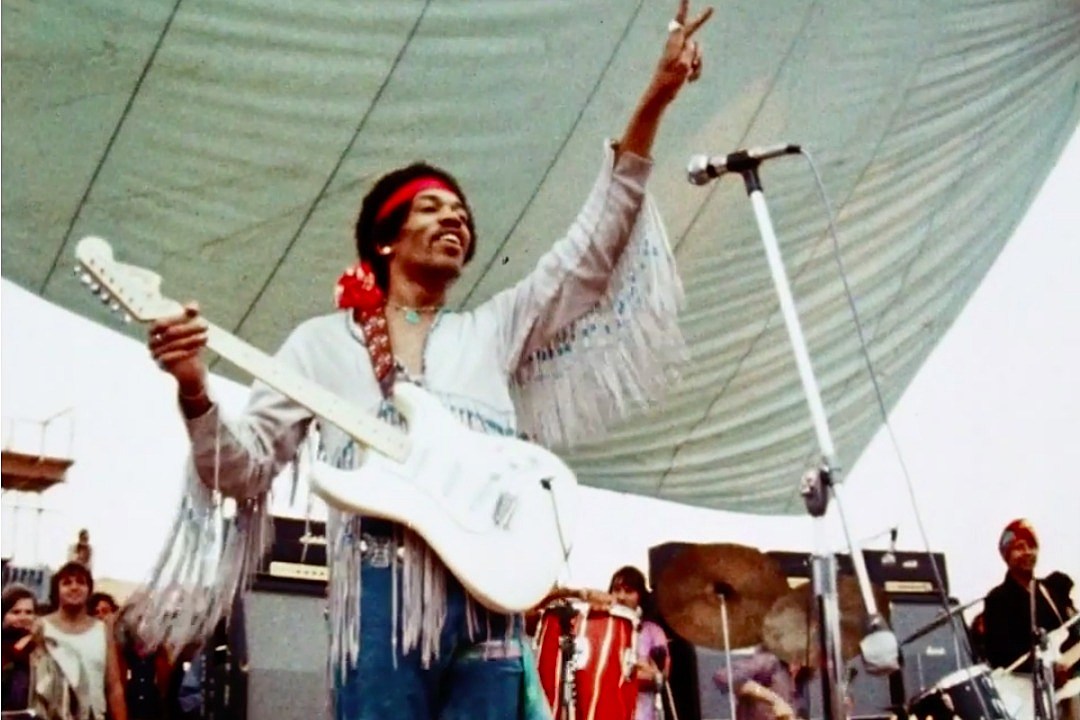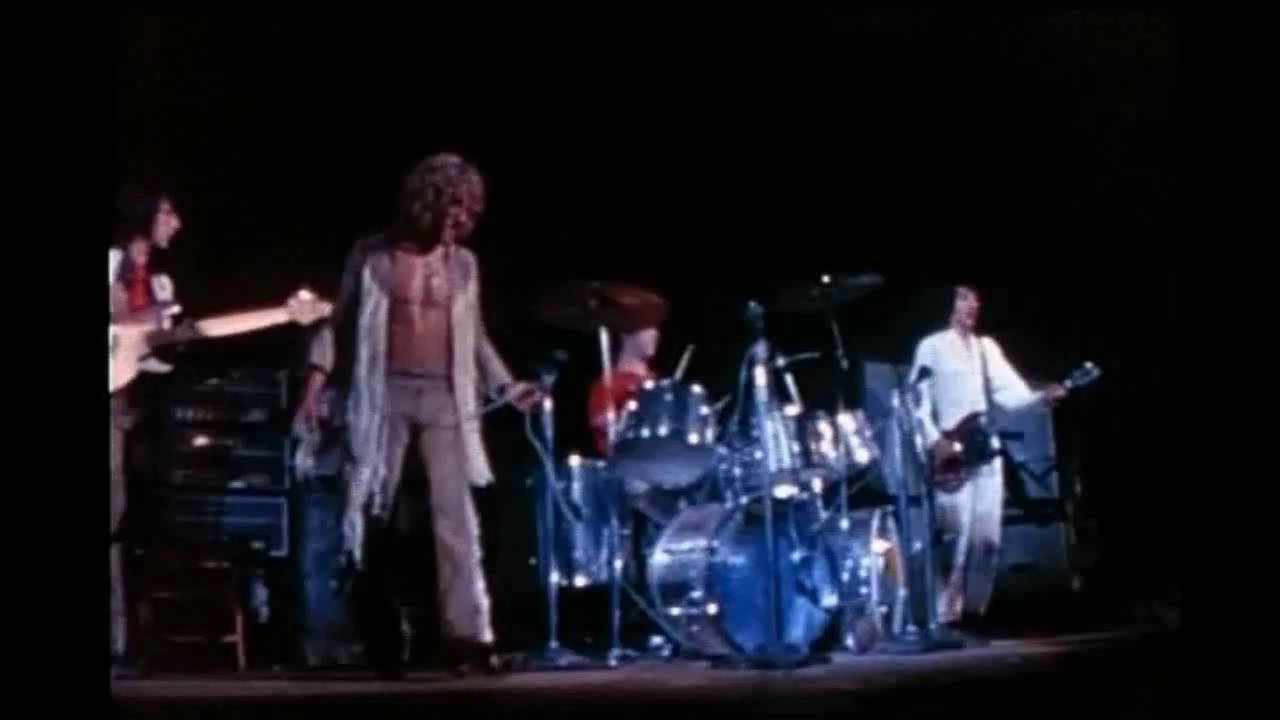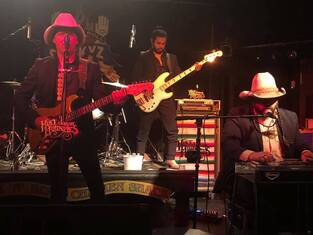 by Julian Spivey Mike and the Moonpies weren’t screwing around on the stage on Thursday, August 29 at Stickyz Chicken Shack in Little Rock, Ark. proving they’re one of the best acts in the current red dirt country music scene. The show was non-stop fun and musical excellence from start-to-finish for the 90 minutes or so the band performed their brand of Texas country music. The group, out of Austin, Texas, began their set with “Cheap Silver” off their recent album Cheap Silver and Solid Country Gold, which was just released on August 2. The band somewhat shockingly dropped the album just a year after its previous release Steak Night at the Praise Rose, which is the album that first introduced me to this awesome group, and did so with a more orchestral sound after traveling to London to record with the London Symphony Orchestra at Abbey Road Studios – truly a surprise for a honky tonk band out of Texas. The sound of the new album is fantastic and Mike and the Moonpies showed off the majority of its tracks on Thursday night with highlights including the album’s first single “You Look Good in Neon,” “Danger,” “Young in Love,” “Miss Fortune” and “If You Want a Fool Around.” One of the highlights of the night was actually the moment that came before the performance of “If You Want a Fool Around” when the band was upstaged, but in on the whole thing, when a couple got engaged at the very first show of the bride-to-be’s favorite band. It was a moment that had teary eyes and smiley faces all around. Most of my favorite performances of the evening came from Steak Night at the Prairie Rose, especially the title track that had the enthusiastic, though small crowd singing along. Other spectacular songs from the album performed on Thursday night were “Beaches of Biloxi,” which might be my favorite song of the band overall, “Road Crew,” “Might Be Wrong,” “Getting High at Home” and “Things Ain’t Like They Used to Be.” Another of my favorite performances was last year’s “Country Music’s Dead,” a collaboration with fellow Texas artist John Baumann that didn’t appear on Steak Night. It was one of my favorite songs of 2018 and tells about the real and true country bands playing in small venues every night while if you were listening to the mainstream you might actually believe country music was dead. Mike and the Moonpies is an incredibly tight group of musicians – all spectacular in their own right. Frontman Mike Harmeier has an excellent stage presence and isn’t afraid to move around a bit on stage with the occasional Dwight Yoakam-esque dance moves. Harmeier also has the perfect honky tonk voice for a band of this stature. Lead guitarist Catlin Rutherford plays some nice licks throughout the show, while bassist Omar Oyoque and drummer Kyle Ponder lay down the groove and beat terrifically. Last, but certainly not least is steel guitarist Zachary Moulton, who’s fantastic steel playing is the sound potentially most important to this Texas country honky tonk band. Being a new fan of Mike and the Moonpies and a music follower ever forced to look forward to new releases without much time to get to a band’s back discography I was way more familiar with the stuff on the group’s two most recent albums than some of their older fan-favorites that had many throughout the crowd jamming along to, but songs like “Smoke ‘Em If You Got ‘Em” and “Mockingbird” are just as great as the newer stuff. I’ll certainly have to go back in the group’s timeline and see what else I’m missing. The group ended their main set on Thursday at Stickyz with a raucous performance of “We’re Gone” from Steak Night before returning for a two-song encore that begin with certainly the most surprising performance of the evening in a cover of Harold Melvin & the Blue Notes’ 1972 R&B classic “If You Don’t Know Me by Now,” which allowed Harmeier to show he could get as soulful as the best of them. The concert ended with another cover, this one of late ‘90s two-hit wonder Fastball’s “The Way,” which the group recorded as a tribute to the 45th anniversary of Austin’s Hole in the Wall venue, which was a launchpad for both Fastball and Mike and the Moonpies. Mike and the Moonpies put on one helluva country music show and if you have had the opportunity to check them out yet I highly recommend doing so.
0 Comments
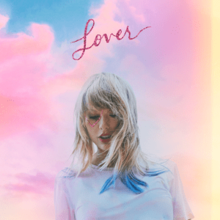 by Tyler Glover During Taylor Swift's single, "Look What You Made Me Do" from her previous album, Reputation, she proclaimed that the old Taylor could not come to the phone because she was dead. Following quite possibly the biggest controversy of her career thus far, Swift embraced this dark time in her life with an album that embraced the snake persona she had been assigned. With her good girl image tarnished and all of the bad press, she went very dark with Reputation and it appeared that the rumor of her death was true. However, on August 23rd, Swift released her highly anticipated seventh full-length album: Lover. Upon listening to this album, it appears that the reports of the old Taylor Swift's demise were premature. Everything her fans ("Swifties") loved about her all of these years is right here on Lover. It’s an album that is extremely romantic, living up to its name entirely. The album conveys all of love's complex components those who fall in love go through. Whether it’s the transition from friendship to romance, the fragile beginnings of a relationship, the admiration for your partner, the fear of losing it, or just dealing with the world together, Lover has a song that covers it. But even with an album called Lover, Swift does not resist the urge to call out some haters at times. The album begins with her singing probably one of the most cutthroat kiss-off songs of her career with "I Forgot That You Existed." Swift even giggles at times during the song in a carefree bop that sings "I forgot that you existed/It isn't love, it isn't hate, it's just indifference." It begins the album with a great energy but an energy that really does not represent the love that Lover has to offer. But honestly when listening to the entire album, it really tells a story and the purpose of this song appears to be a transition from embracing the dark side of Reputation and moving onto the pastel world of Lover. After "I Forgot That You Existed," Swift sings about the fragility of a new relationship in one of the standouts, "Cruel Summer." She sings about a beautiful romance in "Lover," where she sings at one point "I promise to be overdramatic and true to my lover." "Lover" is quite possibly the most romantic song Swift has ever done. It is a song that sounds like it could play a wedding for one of the slow dances. In fact, some YouTube videos have shown this has actually already happened. In one of the best songs on the album, "The Man," Swift approaches how people have viewed her as a woman throughout her career but if she were a man and did things the exact same way, she would be THE man. It has a great beat, very catchy, and very relevant to the conversation about gender equality going on today. Another standout on the album is called "Soon You Will Get Better" featuring the Dixie Chicks. This song is about her mother's battle with cancer. This song really is reminiscent of the music Swift put on her Grammy winning second album, Fearless. She is very vulnerable, and any listener can hear the struggle and the emotion in this song. One of the best things when listening to music is to truly feel the artist is authentic. There is no question of this in this song. Other great songs worth listening to are the previously released singles "ME!" featuring Brendon Urie and "You Need To Calm Down." "ME!" is a great power anthem about self-love while "You Need To Calm Down" tackles Swift’s haters, those who oppose the LGBTQ community and the media for pitting successful women against each other. Swift has a way of penning these anthems with a combination of strong lyrics, undeniable energy and good will to help any listener feel empowered to do battle in this world. The final standout is "Cornelia Street." In it, Swift sings about events that happened on this street with someone and how if their relationship ended, she could never walk that street again. This song really showcases what Swift is great about and one of the reasons I feel she is as successful as she is. In this song, she sings the story of something in her life but makes it feel completely relatable to the listener while also giving enough details to be able to distinguish that these events happened to her. With an album that features 18 songs, some of it does feel like filler, like "I Think He Knows," "Paper Rings," "False God" and "It's Nice To Have A Friend." However, even these songs are really enjoyable to listen to, especially "Paper Rings." This is definitely a solid album. Upon multiple listens, I honestly didn’t skip a single song. One great thing about Lover is that Swift seems to understand certain things may not be someone's cup of tea, but she offers multiple opportunities so that there is something for everyone. The ultimate way to sum up the album is to say that Lover combines the '80s pop sound of 1989 and the strong lyricism of Red to make one of Swift’s best albums to date. 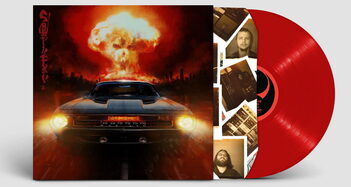 by Julian Spivey Every freakin’ time Sturgill Simpson starts to release new music we start to hear the same old thing … “he’s lost his way,” “he’s turned his back on his fans,” “he’s sold out,” “he’s pulled a bait and switch,” etc. etc. etc. It never fails. It’s gotten to the point where it feels like some people – often the same people every time – have pre-written comments decrying Simpson’s change in sound ready for the comment sections of sites like Saving Country Music, Farce the Music or what have you. Sometimes these comments are made well before any actual music is released simply based on reports that the singer-songwriter is going in a different direction. Simpson’s debut album High Top Mountain was released in 2013 and was very traditional sounding country music that had many excited for what appeared to be a throwback artist. Most people who know Simpson these days didn’t have a clue who he was back then. But, many of those that did were a bit bothered when the first release off his sophomore album Metamodern Sounds in Country Music was “Turtles All the Way Down” less than a year later in 2014. What was this psychedelic stuff and what the fuck does ‘Metamodern’ even mean? But there was enough traditional sounding stuff like “Long White Line” and “Life of Sin” on the album to not cause too much of an outcry. Many more people got to know Simpson as a result of the success of Metamodern Sounds in Country Music. Then two years later we got A Sailor’s Guide to Earth, which featured a horn section, more soulful music and was somewhat of a concept album. Horns on a country record? What’s going on here! Then Simpson DID “Saturday Night Live” and was nominated for the overall Album of the Year at the Grammy Awards and took home the trophy for Best Country Albums at the Grammys, despite the rest of the country music industry acting as if he didn’t exist. And, many more people got to know Simpson as a result of the success of A Sailor’s Guide to Earth. Recently it was announced that Simpson’s fourth studio album Sound & Fury would be a true rock record, which Simpson called: “a really sleazy, steamy rock ‘n’ roll record” and “definitely my most psychedelic and also my heaviest.” It was also announced that an anime film would accompany the album on Netflix when it’s released on September 27. And without ever hearing a sound people erupted. What the fuck is anime?!? But it shouldn’t come as a shock that Simpson wanted to do a full-on rock album. Anybody who’s seen him perform live over the last few years realizes he’s become something of a guitar hero. And anybody who’s listened to his previous records knows that he’s an artist who likes to play around with differing sounds. Some artists stick to they’re accustomed to their entire careers and that’s great. Some branch out and try new things – Kacey Musgraves went with a more pop/disco flavor to her most recent album Golden Hour and won the Grammy for Album of the Year. Bruce Springsteen, my personal favorite artist of all-time, recently released a Country & Western meets Orchestral album Western Stars and though it sounds completely different than most of his discography I believe it’s one of the year’s finest releases. It’s important to remember that even though us purchasing albums and concert tickets is what ultimately allows musicians to have successful careers it’s not what they are making music for – they do it for themselves. Nobody has the right to tell an artist what they should or shouldn’t be doing with their work. If you don’t like it, don’t listen to it. But, it’s not fair to accuse an artist of selling out or turning his/her back on fans because they decide to go in a direction you don’t want them to go in. I’ve enjoyed all three of Simpson’s albums. I’m not sure if I’ll enjoy Sound & Fury yet – I’ll be able to tell you that in late September or early October. I hope it’s great like the rest of his releases. But, if I don’t enjoy it, well, I’ll wait for the next Simpson release and see if I feel differently about it. But I will not act as if he’s done something personally against me. 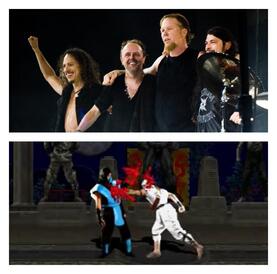 by Preston Tolliver I was fortunate to grow up on a healthy diet of video games and heavy metal. As a young lad who wasn’t really interested in the outdoors, my weekends were spent spinning through walls as Sonic the Hedgehog, or fighting monsters in “Final Fantasy.” As I got older, my taste in games became more violent, more macabre, along with my tastes in music: “Mortal Kombat” and Metallica; Pantera and “Call of Duty;” Slayer and “Doom.” Where a lot of people find comfort in books, I always drifted toward video games; similarly, where many children find their best friends on the football field or basketball court, my friends and I spent days and nights beating each other up with controllers in hand. My love of video games of heavy metal music came with a cost of accepting the stigma that surrounded them. I remember the news reports following the Columbine school shootings – the reports centered on the music of Marilyn Manson, and around first-person shooters like “Doom,” both used as ammunition in an argument to take the focus off the real-world dangers of American gun culture. That stigma hasn’t gone away, as evident by certain politicians and news pundits trying to place the blame of recent acts of terrorism on the feet of the video game industry (and in the case of 24-year-old Connor Betts, who killed nine in Dayton, Ohio, many have blamed heavy metal music). It’s a tired argument, one that I would have hoped faded away with the complete lack of evidence to support it in the last couple of decades. Sure, the occasional mosh pit at a metal show may see some person get their lights knocked out (it is an occupational hazard of going to a metal concert), and many video games do specialize in the grotesque and gory. But I’ve always found more unity in both of those things than division. More than unity, I’ve found that the escapism of video games and music is a blessing, a deterrent from a real world that brews real violence. The real world is ugly: racism is real, and hatred toward people of different races, religions and lifestyles is pedaled by politicians and our president. To blame imaginary worlds in which players shoot pixels on a screen more than the white nationalists who spew anti-immigrant propaganda and an organization that funnels millions of dollars to ensure that everyone has the simplest access to firearms is not only ignorant, it’s abhorrent. The blame for shootings – such as the ones that have splintered the communities in El Paso, Texas and Dayton – rest at the feet of politicians who are more willing to take money than action, a culture that continues to permeate bigotry and racism, and the figureheads who bask in it. It rests on the legislators who refuse to hear any discussion on gun reform so that they and their campaigns may continue profiting from the National Rifle Association (there’s a reason you don’t see Nintendo funneling millions of dollars into Washington), and those who paint minorities and immigrants as threats to our country and our way of life. The real world is ugly, to an almost unbearable point. I’ll be spending my afternoon today escaping it for a world in which I’m an expert sharpshooter, equipped with more firepower than I believe should be legally allowed in real life. But I’ll enjoy playing it, and my thirst for blood won’t go beyond the game. As usual, I’ll be relieved to enter a violent world that’s somehow more comforting than the one outside. by Julian Spivey Thursday, August 15 marks the 50th anniversary of Woodstock, the epic three-day music festival that took place in 1969 in Bethel, N.Y. The festival billed as “3 Days of Peace & Music” saw some of that era’s biggest musical acts like The Who, Creedence Clearwater Revival, the Grateful Dead and Jimi Hendrix grace its stage and helped to make stars out of other acts like Santana, Crosby, Stills & Nash (who performed its second ever gig at the festival) and Joe Cocker. Michael Wadleigh’s documentary that would be released in 1970 helped seal Woodstock’s place in pop culture history. Today we’re going to rank all of the musical performance from Woodstock that appeared in Wadleigh’s documentary from best-to-worst. We’d love to delve further into the performances at the festival in general, but unfortunately cameras weren’t rolling for many of the biggest acts at the festival like CCR and the Grateful Dead. 1. "I-Feel-Like-I'm-Fixin'-to-Die Rag" by Country Joe McDonaldI know this is going to be controversial – after all Jimi Hendrix DID Woodstock – but, I feel like Country Joe McDonald’s performance of “I-Feel-Like-I’m-Fixin’-to-Die Rag” is the performance that truly hits home what Woodstock was all about and what that era was all about. It was a group of people coming together for peace and love amidst the Vietnam War and this is possibly the greatest anti-Vietnam War song of that era. I truly enjoy “I-Feel-Like-I’m-Fixin’-to-Die Rag” because its satire – so it’s comical and yet striking and the performance at Woodstock just seemed to capture the moment in time better than anything else on the documentary. 2. "With a Little Help from My Friends" by Joe Cocker and the Grease BandJoe Cocker was relatively unknown before performing at Woodstock in 1969 and being featured in the documentary the next year, but it was a star-making performance for him. “Woodstock” the documentary probably did more for the careers of Cocker and Carlos Santana, also previously unknown, than any others. Cocker and his Grease Band where able to take The Beatles “With a Little Help From My Friends” off the Sgt. Pepper’s Lonely Hearts Club Band album and turn it into an epic soulful number. Cocker actually made the song sound cooler than The Beatles’ version led by Ringo Starr. That’s hard to do. 3. "Purple Haze," Woodstock Improvisation & "Villanova Junction" by Jimi HendrixThere’s no doubt that Jimi Hendrix was the star of Woodstock, ending both the festival and the documentary. Hendrix had it in his contract that nobody could perform after him, so with the set times being pushed back so far over the weekend he actually closed the festival early Monday morning after many had gone home. So, the crowd for Hendrix may have been smaller than for any other performer at the festival. That didn’t stop him from putting on an iconic rock performance. Hendrix had the most performances featured on the “Woodstock” documentary, but it’s the performance of “Purple Haze” followed by an improvised instrumental and the instrumental “Villanova Junction” that closes out the event that stood out as the best performance to me, even over the epic performance of our National Anthem that will appear soon on this list. 4. "Handsome Johnny" by Richie HavensRichie Havens was the very first performer at Woodstock, though he wasn’t supposed to be (it was scheduled to be the band Sweetwater), but when other artists got caught in the massive traffic jam leading to the festival he went on and guys in charge of the event kept talking him into continuing his set until other arrives (some say he performed three hours). His performance of the anti-war song “Handsome Johnny” has always been one of my favorites from the festival and documentary and I truly wish more people knew of both Havens and this song. It’s a folk classic. 5. "Coming into Los Angeles" by Arlo GuthrieArlo Guthrie might not be a household name today, but I have a feeling in 1969 among the hippie crowd he would’ve been one of the bigger names at Woodstock, especially after 1967’s Alice’s Restaurant. This is an example of one of the best performances at Woodstock that isn’t done any favors by Michael Wadleigh’s documentary. The song itself – and the performance – is definitely top five for me, but the film cuts the performance off before the end, and shows less of the festival performance onscreen than any other on the documentary – choosing instead to show Guthrie’s arrival via helicopter (as the roads were blocked by cars attempting to make the festival) and, as the song is about smuggling drugs, to a lot of time to show attendees of the festival smoking a ton of pot and doing other drugs. Guthrie’s exclamation, “Lotta Freaks!” before the performance is one of the most memorable moments of the documentary though. 6. "Star-Spangled Banner" by Jimi Hendrix7. "Voodoo Child (Slight Return)" by Jimi HendrixIf the words “peace,” “love” or “hippies” aren’t the first words to pop into your mind when hearing the name “Woodstock” than it’s likely going to be “Jimi Hendrix.” At the time Hendrix was pretty much the biggest act in the music world right along with The Beatles and got the chance to close out Woodstock. His performances of “Voodoo Child (Slight Return)” and “The Star-Spangled Banner,” with the first deftly leading into the other, show why many consider Hendrix to be the greatest guitarist of all-time. Hendrix’s version of “The Star-Spangled Banner” is the reason so many young guitarists want to learn the song, and just about everyone does it the Hendrix way. What’s interesting is with Hendrix’s improvisations on our National Anthem echoing the sounds of the bombs glaring in the night and it being during the height of the Vietnam War it almost comes off as somewhat of a protest performance. Either way it’s brilliant. 8. "Summertime Blues" by The WhoThe Who were without a doubt one of the biggest acts to perform at Woodstock, but maybe weren’t quite as bit into the hippie peace and love aspect of it all with the Abbie Hoffman incident and all when guitarist Pete Townshend may or may not have hit Hoffman in the back and definitely threatened to kill the next person who crossed his stage in a moment unfortunately not captured by the documentary. But, one thing for certain was that The Who were one of the most badass bands in the world and played a lengthy set, most of which wasn’t captured on camera, but there rocking cover of Eddie Cochran’s early rock classic “Summertime Blues” was and it was terrific. 9. "Suite: Judy Blue Eyes" by Crosby, Stills & NashStephen Stills, Graham Nash and David Crosby had all come from other great ‘60s bands to form the folk-rock trio “Crosby, Stills and Nash,” which would go on to become iconic. But, believe it or not, Woodstock was only the trio’s second performance together and Stills told the audience, “we’re scared shitless!” You wouldn’t have known the trio was just in its early stages with the way they harmonized together on the epic “Suite: Judy Blue Eyes.” 10. "I'm Goin' Home" by Ten Years AfterTen Years After, a blues-rock band from England, weren’t well known when they performed at Woodstock, but their amazing soulful performance of their song “I’m Goin’ Home” with the rock classics “Blue Suede Shoes” and “Whole Lotta Shakin’ Goin’ On” interspersed into it really skyrocketed them to fame when the documentary premiered in 1970. The group would have their most well-known song “I’d Love to Change the World,” perhaps inspired by the band’s time at Woodstock, would debut in 1971. 11. "We're Not Gonna Take It"/"See Me, Feel Me" by The WhoThe Who’s Woodstock performance of “We’re Not Gonna Take It”/”See Me, Feel Me” off their Tommy rock opera album is one of the cooler performances captured in Michael Wadleigh’s 1970 documentary because of the way the lights at night played off of Roger Daltrey and the rest of the band shading them in an orange and sometimes blue light. This is also a performance where Wadleigh’s use of multiple panels onscreen showing what multiple cameras captured just makes the whole performance look really great. 12. "Soul Sacrifice" by SantanaThis is perhaps the ranking I’ll catch some grief about. Santana was unknown at the time of Woodstock in 1969, but that shouldn’t come as a surprise to anybody as Carlos Santana was only 22 at the time. The guitarist and his group’s performance at Woodstock, especially on the jam “Soul Sacrifice” was epic, even if Carlos himself might not remember a whole lot of it – he’s said he was high on psychedelics at the time and reportedly felt that his guitar was a slithering snake he had to tame. The reason why it ranks so low on my list is I’ve never been the biggest fan of instrumentals and this one goes on too long, especially the extended drum solo by Michael Shrieve. One of my favorite parts of the documentary though comes during this performance as the camera shows in multiple panels the band performing with audience members dancing to the song in interspersed and in about a two-second clip you can see a completely nude man dancing with a sheep – I want to know that dude’s story so badly! 13. "A Change is Gonna Come" by Canned HeatThe blues-rock performance of “A Change is Gonna Come” by Canned Heat is terrific, but I can’t help but wish one of the group’s best known hits like “Going Up the Country,” which had its studio recording appear in the documentary early on, or “On the Road Again” – both of which were performed at Woodstock – had been chosen for the documentary instead. 14. "Joe Hill" by Joan BaezJoan Baez was one of the most political folk artists of her era and she certainly didn’t shy away from this at Woodstock. Prior to her performance her husband David Harris, who was an anti-draft protester, had been arrested and convicted for draft evasion. Baez speaks of his arrest to the audience before performing what she claimed was his favorite song, “Joe Hill,” the tale of a real-life labor activist who died under controversial circumstances. Baez has a beautiful voice, but her two performances captured in the Woodstock documentary just aren’t that memorable. 15. "Uncle Sam Blues" by Jefferson AirplaneJefferson Airplane was one of the pioneering psychedelic rock bands of the ‘60s with memorable hits like “White Rabbit,” “Somebody to Love” and “Volunteers,” all of which were performed at Woodstock, but not captured for the documentary. The more interesting of the two performances was “Uncle Sam Blues,” a bluesy anti-war number with vocals by Jorma Kaukonen that was originally done with Kaukonen and bassist Jack Casady’s group Hot Tuna. 16. "I Want to Take You Higher" by Sly & the Family StoneSly & the Family Stone were certainly one of the most memorable acts at Woodstock and if you’re really into soul and funk music this would probably rank a good deal higher on your list, but the performance of “I Want to Take You Higher” just drags on too long for my tastes, but like some of the other performances captured on film the lighting giving Sly Stone a blue glow is fascinating. 17. "Freedom"/"Sometimes I Feel Like a Motherless Child" by Richie HavensThis performance by Woodstock’s unintended opener Richie Havens is amazing because he was frankly out of material and was constantly being asked by the festival’s promoters to keep extending his set as they were waiting on other acts to arrive. So, Havens improvised “Freedom” right on the spot with a bit of the traditional Negro spiritual “Sometimes I Feel Like a Motherless Child” thrown in. 18. "Won't You Try"/"Saturday Afternoon" by Jefferson AirplaneGrace Slick introduced Jefferson Airplane’s performance at Woodstock memorably as “morning maniac music,” as their set which was supposed to be the headliner of Saturday night didn’t begin until around 8 a.m. on Sunday morning due to delays. Slick is a very memorable vocalist, but her performances are not showcased on the documentary. Instead we get a combination of “Won’t You Try” and “Saturday Afternoon,” which I could have taken or left. 19. "Rock & Soul Music" by Country Joe McDonald and the FishCountry Joe McDonald was the only act to perform more than one set at Woodstock playing a solo set on day two of the festival and then with his band the Fish on day three. The performance captured in the documentary is the short and sweet “Rock & Soul Music,” which is otherwise unmemorable, especially given that another McDonald performance ranks atop this very list. 20. "Younger Generation" by John SebastianJohn Sebastian called Woodstock “a mindfucker of all-time” and truly seemed to be having one of the better times at the festival among performers, although I’m simply going off his one performance for this. Sebastian played a short and sweet mellow set of just five songs, ending with “Younger Generation,” which is captured on film and interspersed with an awful lot of footage of naked toddlers running around. 21. "Swing Low, Sweet Chariot" by Joan BaezLovely vocal by Joan Baez on the traditional spiritual. 22. "At the Hop" by Sha Na NaHow did this performance even happen at Woodstock? Sha Na Na was completely out of date even in 1969 with their throwback ‘50s vibe, sound and look. Sha Na Na was the penultimate performance at Woodstock before Jimi Hendrix, so at least they could say they opened for Hendrix. What's your favorite Woodstock performance?
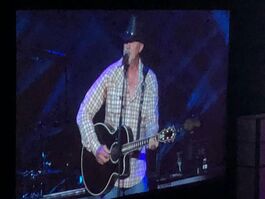 by Julian Spivey Country music hitmaker Trace Adkins was brought in by the Fishing League Worldwide (FLW) professional fishing league to pump up the fans on Sunday, August 11 at the Bank OZK Area in Hot Springs, Ark. before the final weigh-in determining the champion of the FLW Cup giving a free concert to the packed arena of fishing fanatics. Adkins kicked off the short 45 minute set at 4 p.m. before the final weigh-in began at 5 p.m. and eventually crowned two-time FLW Angler of the Year Bryan Thrift the more than $300,000 champion. Adkins began his show with “(This Ain’t) No Thinkin’ Thing,” his first career No. 1 hit from 1997, and got the crowd hooked from the git go. Being a short 45-minute show Adkins had to cull down his usual setlist quite a bit, but still gave the crowd a run through many of his biggest career hits. Country-rockers were the specialty on Sunday afternoon with the giant long-haired country boy with the booming bass baritone belting out hits like 2002’s top 10 “Chrome,” 2003’s top-five “Hot Mama,” 2004’s No. 2 hit “Songs About Me” and the No. 1 “Ladies Love Country Boys” from 2006. Adkins gave the packed Hot Springs audience a laugh or two with his 2009 track “Marry for Money,” telling the crowd beforehand that if the anglers couldn’t get the big prize maybe they could at least find them a rich woman to take home. The one song that you absolutely knew that Adkins would not pass up at a professional fishing tournament weigh-in was his 2011 top-10 hit “Just Fishin’,” the Grammy-nominated song about spending some good heart-to-heart time with a daughter. Adkins told the crowd “parents should teach their children how to fish and about Jesus and they can learn the rest on their own.” It was a heart-warming performance that more than likely had a few in attendance with teary-eyes. My favorite performance of Adkins’ short show on Sunday afternoon was 2008’s No. 1 hit “You’re Gonna Miss This,” which is my favorite Adkins song in general. It’s another potentially tear-inducing ballad about not rushing through your life because one day you’re going to look back on it all and miss it. It’s something I believe all of us aging rapidly in this fast-paced world can feel down deep inside. Adkins ended his show with what’s unfortunately probably become his most well-known song – the absolutely ridiculous “Honky Tonk Badonkadonk,” which topped out on the Billboard country singles chart at No. 2 in 2005. The crowd seemed to really enjoy the performance, but I’ve long held that it might be the single worst hit song in country music history and it’s no doubt now the worst song I’ve ever had to sit through live – but, hey, it was a free show. I knew going in this would be an abbreviated show because of it being at the pro fishing event, but the short set left a lot of my favorite Adkins songs off the list. It sure would’ve been nice to hear some of his earlier hits like “Every Light in the House is On,” “There’s a Girl in Texas,” “I Left Something Turned On at Home” and “Then They Do.” These are songs, like “You’re Gonna Miss This,” that truly show Adkins is capable of being one of the best around when he’s performing stuff with a bit more substance than “Honky Tonk Badonkadonk.” 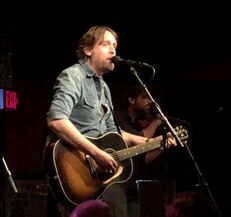 Hayes Carll performs at The Rev Room in Little Rock, Ark. on Saturday, August 3. Hayes Carll performs at The Rev Room in Little Rock, Ark. on Saturday, August 3. by Julian Spivey Hayes Carll brought his latest tour promoting his most recent album What It Is to The Rev Room in Little Rock, Ark. on Saturday, August 3 to play for an always loyal crowd of enthusiasts supporting the Texan singer-songwriter who briefly lived in central Arkansas and went to Hendrix College just up the road a ways in Conway. I’ve long considered Carll to be one of the best singer-songwriters in the genres of Americana, Red Dirt/Texas Country, alt-country or whatever you’d like to call it. I’ve always been dumbfounded that you don’t here his name as frequently in conversations about the best songwriters of his generations the way you do about artists like Jason Isbell, Sturgill Simpson, Evan Felker (of the Turnpike Troubadours) and the like. Carll, of course, kicked his Little Rock show off with his song “Little Rock,” from his 2005 sophomore album of the same name, much to the pleasure of the jam-packed Rev Room crowd. Carll spent much of his set highlighting What It Is, which for my money is one of the three-to-five best country music albums of the year thus far. He would perform the majority of the tracks from the album during the evening, most notably leaving off the political-leaning “Fragile Men” and “Wild Pointy Finger” off his set possibly not wanting to poke the bear in a red state. The most political he would get was with “Times Like These” with one of my favorite lyrics of the year: “In times like these do I really need a billionaire/just takin’ all my time tryin’ to tell me I was treated unfair?” Everything he played from What It Is at The Rev Room just proved how great of an album it is with songs like the love song “None’ya” and the terrific story song “Jesus and Elvis,” that’s based on a tragic true story. Other terrific tracks from his latest released highlighted on Saturday night were “American Dream,” “Things You Don’t Wanna Know,” “If I May Be So Bold” and the title track of the album. Carll’s set was perfectly mixed between his newer songs and fan-favorites off previous albums like “Wild as a Turkey” and “Girl Downtown,” off Trouble in Mind (2008) and “Love is So Easy” from 2016’s Lovers and Leavers. One of the crowd’s obvious favorite performances of the night would be the acoustic “Beaumont,” from Trouble in Mind, which he did solo as his great backing band took a moment’s breath. I fully believe that “Beaumont” is one of the 100 greatest country songs ever written. It’s that good. Carll’s stripped down version of “Bad Liver & a Broken Heart,” generally one of his more raucous performances of his show, was quite the surprise, but worked really well. It was his more raucous, rocking numbers toward the end of his show on Saturday night that really energized the crowd like the hard-charging, foot-stompers “KMAG (YOYO),” “Drunken Poet’s Dream,” “Hard Out Here” and “Stomp & Holler.” You can’t hear these songs live and see the audience reaction to them and tell me that Carll isn’t one of the best artists around. Carll finishes his set off with the usual “Wish I Hadn’t Stayed So Long” before returning to the stage after uproarious applause from the Rev Room crowd to perform an encore that featured “It’s a Shame,” one of my very favorite tracks off the modern-day classic Trouble in Mind and “The Lovin’ Cup” off KMAG YOYO (& Other American Stories). |
Archives
July 2024
|
